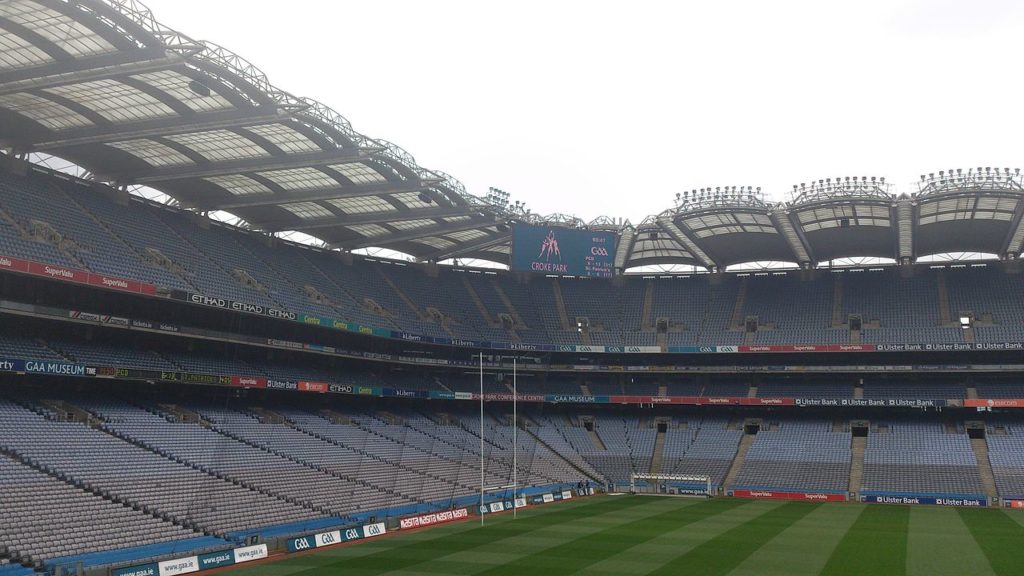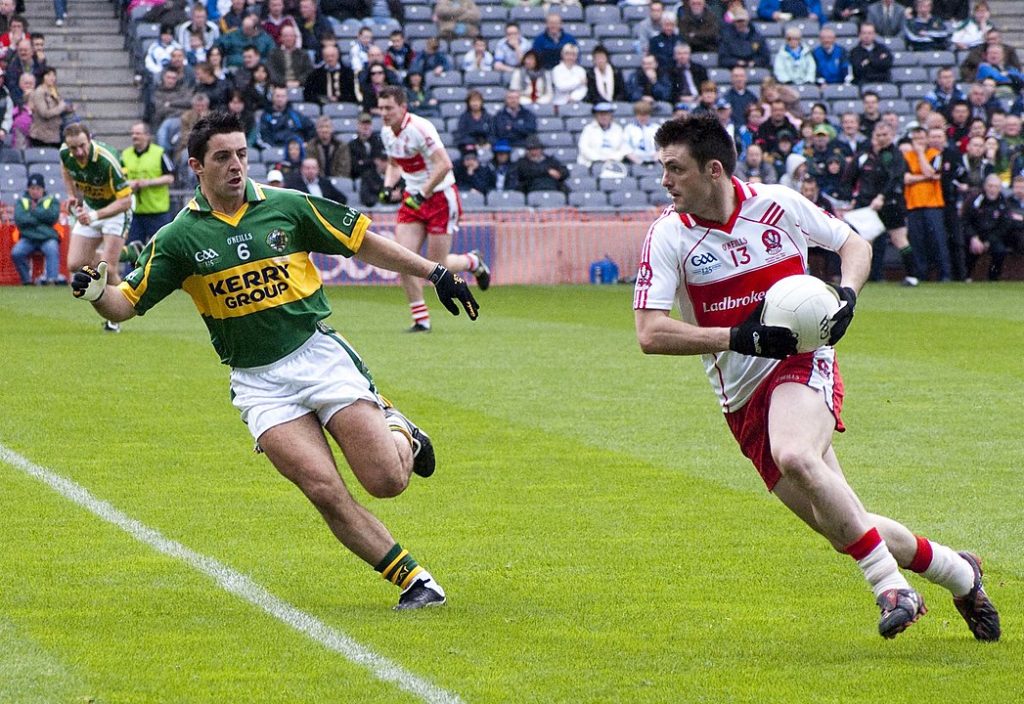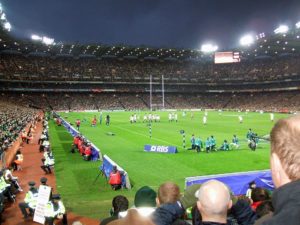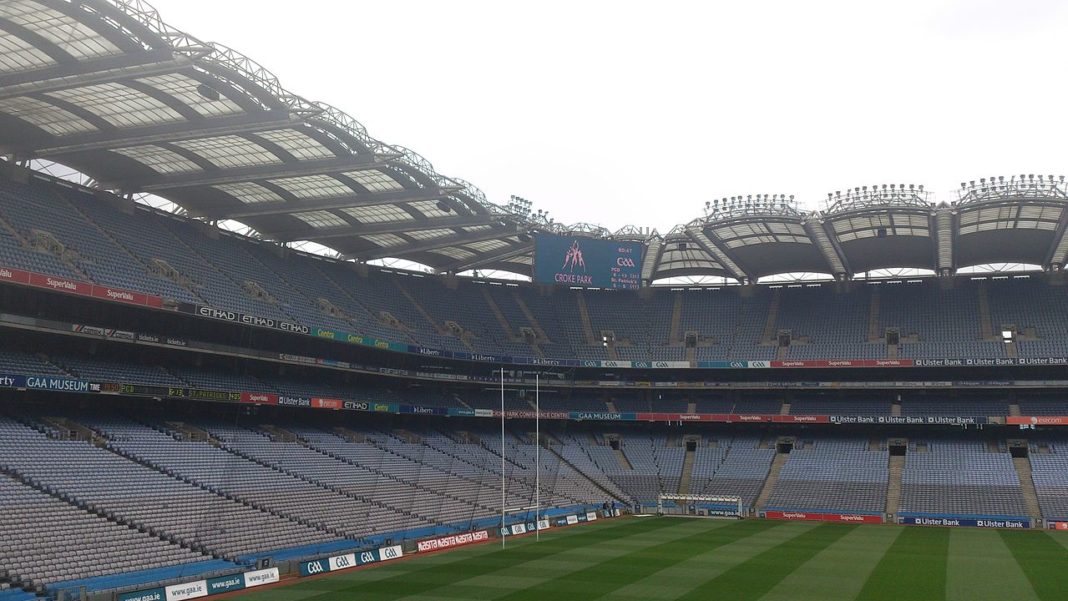Croke Park is a Gaelic games stadium in Dublin, Ireland. Named after Archbishop Thomas Croke, it is referred to as Croker by GAA fans and locals.

Gaelic football, commonly known as simply Gaelic, GAA, or Football is an Irish team sport. It is played between two teams of 15 players on a rectangular grass pitch. The objective of the sport is to score by kicking or punching the ball into the other team’s goals or between two upright posts above the goals and over a crossbar 2.5 meters above the ground.
Players advance the football up the field with a combination of carrying, bouncing, kicking, hand-passing, and soloing (dropping the ball and then toe-kicking the ball upward into the hands).

Croke Park serves as both the principal national stadium of Ireland and the headquarters of the Gaelic Athletic Association (GAA). Since 1891 the site has been used by the GAA to host Gaelic sports, including the annual All-Ireland in Gaelic football and hurling.
A major expansion and redevelopment of the stadium ran from 1991 to 2005, raising capacity to its current 82,300 spectators. This makes Croke Park the third-largest stadium in Europe, and the largest not usually used for association football in Europe.
The area now known as Croke Park was owned in the 1880s by Maurice Butterly and known as the City and Suburban Racecourse, or Jones’ Road sports ground. From 1890 it was also used by the Bohemian Football Club. In 1901 Jones’ Road hosted the IFA Cup football final when Cliftonville defeated Freebooters.

The design for an 80,000-capacity stadium was completed in 1991. Gaelic sports have special requirements as they take place on a large field. A specific requirement was to ensure the spectators were not too far from the field of play. This resulted in the three-tier design from which viewing games is possible: the main concourse, a premium level incorporating hospitality facilities, and an upper concourse. The premium level contains restaurants, bars, and conference areas.
Such was the importance of Croke Park to the GAA for hosting big games, the stadium did not close during redevelopment. During each phase, different parts of the ground were redeveloped while leaving the rest of the stadium open.
According to Wikipedia














